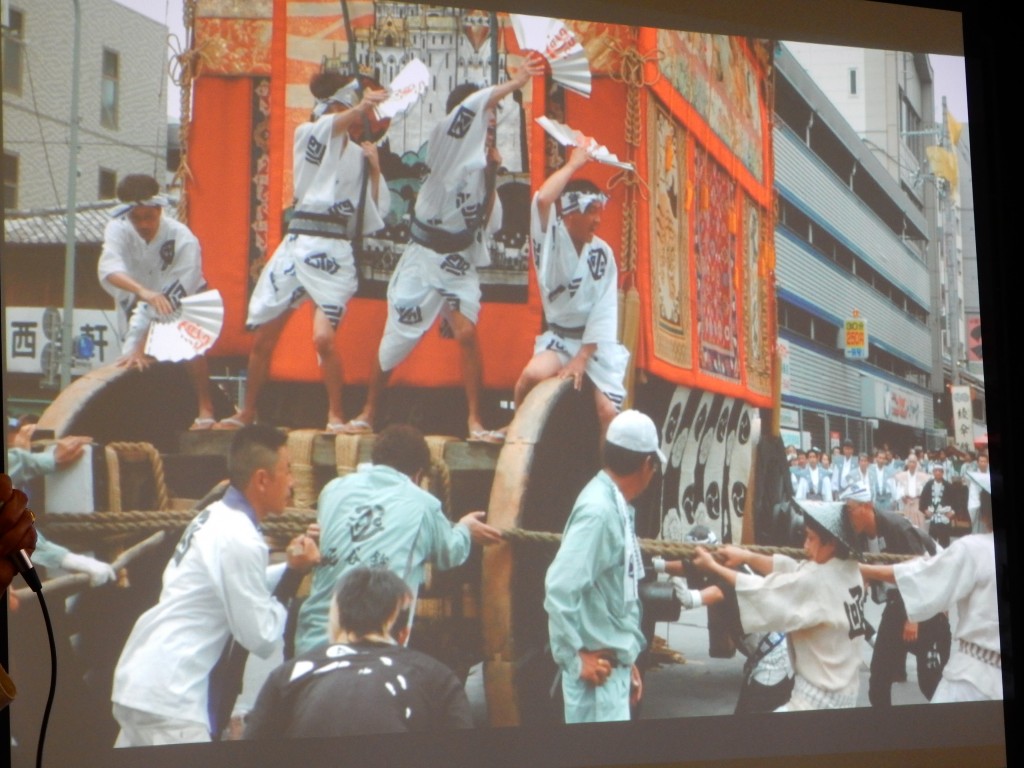
One of the Gion Matsuri's 33 floats – note the tapestries draped over the sides, an important part of the festival (this and other photos from Pawsarat's slide show)
Cause for celebration
July in Kyoto means one thing in Shinto terms: the Gion Matsuri. The streets are alive with the sound of Gionbayashi (the special Gion music), and downtown in the backstreets one can see the huge wooden floats being assembled. Already some of the old merchant houses are opening up their doors to display their treasures prior to the grand procession on the 17th.

Catherine Pawsarat, spiritual environmentalist, who talked at Impact Hub in Kyoto last Saturday evening
For over ten years spiritual environmentalist Catherine Pawsarat has been studying the festival and interviewing participants. Altogether she has amassed some 15000 images and made contacts at all 33 floats. On Sunday she gave a talk with slides entitled “Gion Festival: Where Spirituality meets Sustainability” which provided some fresh perspectives.
The 2014 festival is going to be a historic occasion for a couple of reasons. One is the return of the Ofuneboko (the boat float), which hasn’t appeared for 150 years since it was burnt in the late 1800s. Now thanks to public donations, it’s been carefully reconstructed.
Another cause for celebration is the restoration of the second procession a week after the first. This is the traditional pattern, but 49 years ago the city council insisted on a single procession in order to minimise disruption to traffic etc in the city centre.
Now however the original two processions have been restored in keeping with the spiritual intent of the festival – one to greet the three mikoshi (portable shrines) as they leave Yasaka Jinja for their resting place (otabisho), and one to see them off on their return to the shrine on July 24th. The first one (Sakimatsuri) consists of 23 floats; the second one (Atomatsuri) consists of only 10 floats (details here).
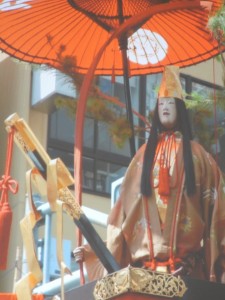
Jingu Kogo, the shamaness leader of Japanese mythology
Shamanic, local and syncretic
The festival originated some 1100 years ago to protect against ‘summer disease’, which was prevalent in Kyoto’s stew of heat and humidity. The purpose was to drive away the evil spirits that brought the plague, and there were strong shamanic elements. One of the floats is dedicated to Jingu Kogo, the legendary shamaness who in Japanese mythology invaded Korea. She bears a long fishing rod, because supposedly she used fish for divination.
Other shamanic features include masks which now feature as part of the treasures of the neighbourhood floats; the waving of naginata long swords; and a dance performed by music which quickened in tempo like the crescendo drumming used to induce trance. Pawsarat also suggested that the conditions of the musicians seemed designed to induce altered states of consciousness, since the floats contain up to 50 men crammed for hours at a dizzying height into a tiny sauna like space in the sweaty sweltering heat of Kyoto in July!
One other point that came over forcibly in the talk was the community aspect of the festival, with each float sustained by neighbourhood cooperation. Yet though originally a neighbourly festival, it is now swamped by over a million visitors, which has put enormous strains on hospitality. Remarkably the locals have managed to adapt.
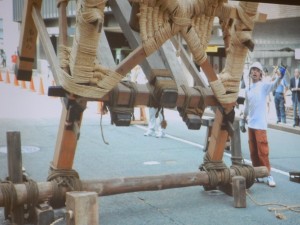
Putting the floats together is a skilled and hazardous operation
For the males of the area the festival constitutes a rite of passage, with enormous physical effort and risk involved. (By and large, females participate in support roles.) The average age is apparently somewhere around 70, and efforts are being made to introduce youngsters. Because of the size and height of the floats, there is always the possibility of injury or worse.
Another feature of the festival is its deeply syncretic nature. There are Buddhist deities such as Kannon, and the Shugendo founder, En no Gyoja, features on one float. Daoist sages, and even a Chinese Zen monk can be seen on others. One prominent protective deity is Gozu Tenno, an imported god with an ox-head similar in aspect to the Tibetan Lord of Death. Pawsarat suggested that the deity may have been imported after an outbreak of smallpox, a ‘foreign’ disease.
(The Ox-Head God falls into the Tenbu group, gods of Hindu origin that have been absorbed into Buddhism and act as protectors. Before its conversion to a ‘purely’ Shinto shrine by Meiji nationalists, Yasaka Shrine was a miyadera (shrine run by a temple) and its main deity was Gozu Tenno. More information here.)
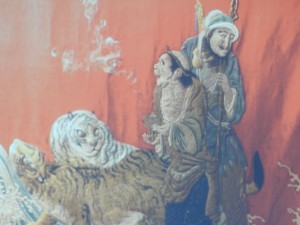
Part of a tapestry showing Daoist sages
A people’s festival
Though she’s been researching for over ten years and made some good friends among the festival participants, Pawsarat pointed out that such is the rich legacy of the festival there remains much that still isn’t known about this wonderful cultural event. Some of the textiles for instance are unique to Gion and their provenance cannot be determined. One example contains several different kinds of animal hair, and the suggestion has been made that it was borne by the arms-bearers of Kublai Khan as a form of protection.
Tapestries are just one of the wonders of the marvellous Gion Festival, but as Pawsarat pointed out it’s the local people who make the festival what it is. For the next three nights over a million visitors will be wandering the streets of downtown Kyoto to enjoy this historic event. It started as protection against disease; it became a medieval merchant’s festival to display wealth and overseas connections; now it is the city’s premier ‘people’s festival’. This is a historic year, and it promises to be special. Why not join us and celebrate in the streets of the ancient capital?
****************************************************
Green Shinto has previously run a series of nine articles about the festival. For the first one, please click here. For the Hindu links of the festival, click here. To learn more about chigo, click here. For the evening before the parade (Yoiyama) click here, and for the parade itself click here.
For a full schedule of events, see the Wikipedia page here. See Pawsarat’s Gion Festival Facebook page here. For articles about the festival by Kyoto Visitors Guide and Japanese Religions website, click here or here. For a 28 min NHK programme in English, see this youtube video.
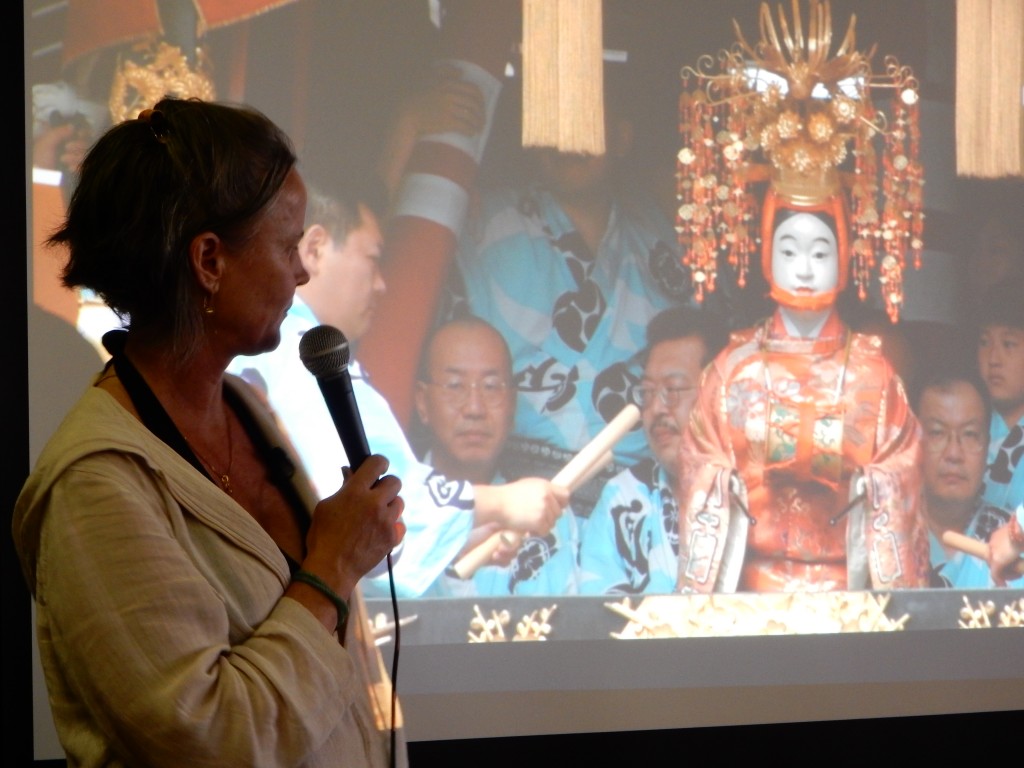
Catherine Pawsarat notes the cramped conditions of the musicians in one of the floats that bears a doll representing the boy 'chigo', into whom the shamanic spirit would once descend
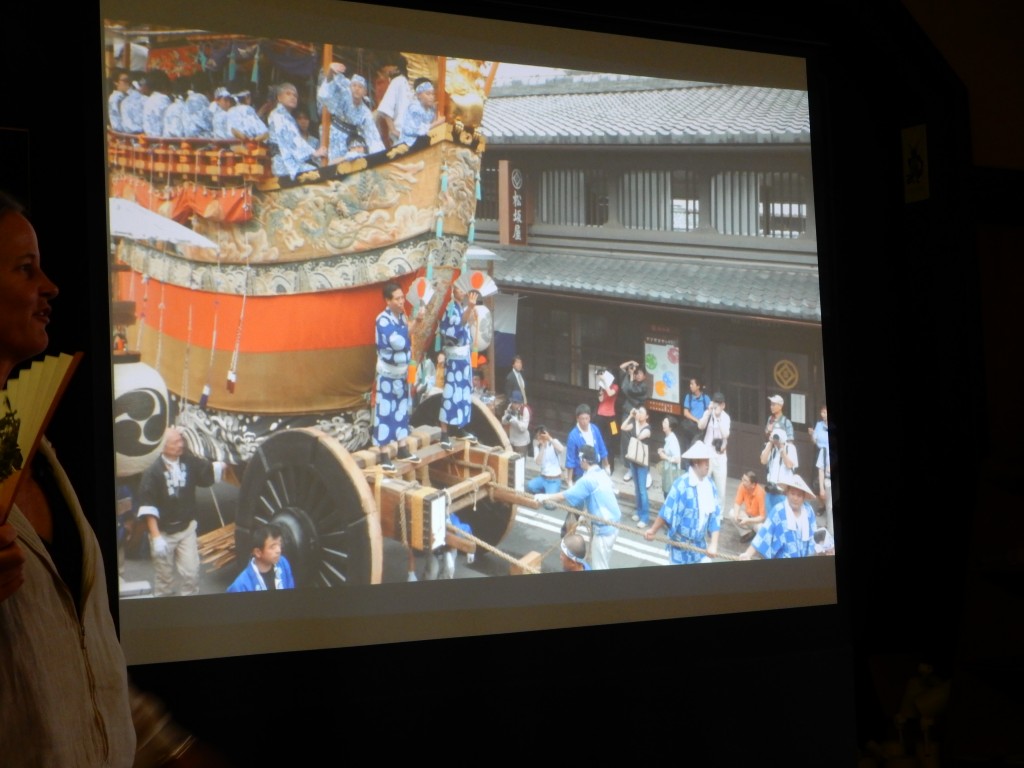
Musicians have to endure hours of heat and humidity while packed together in a high space, during which they are exposed to the repetitive hypnotic strains of the Gionbayashi music
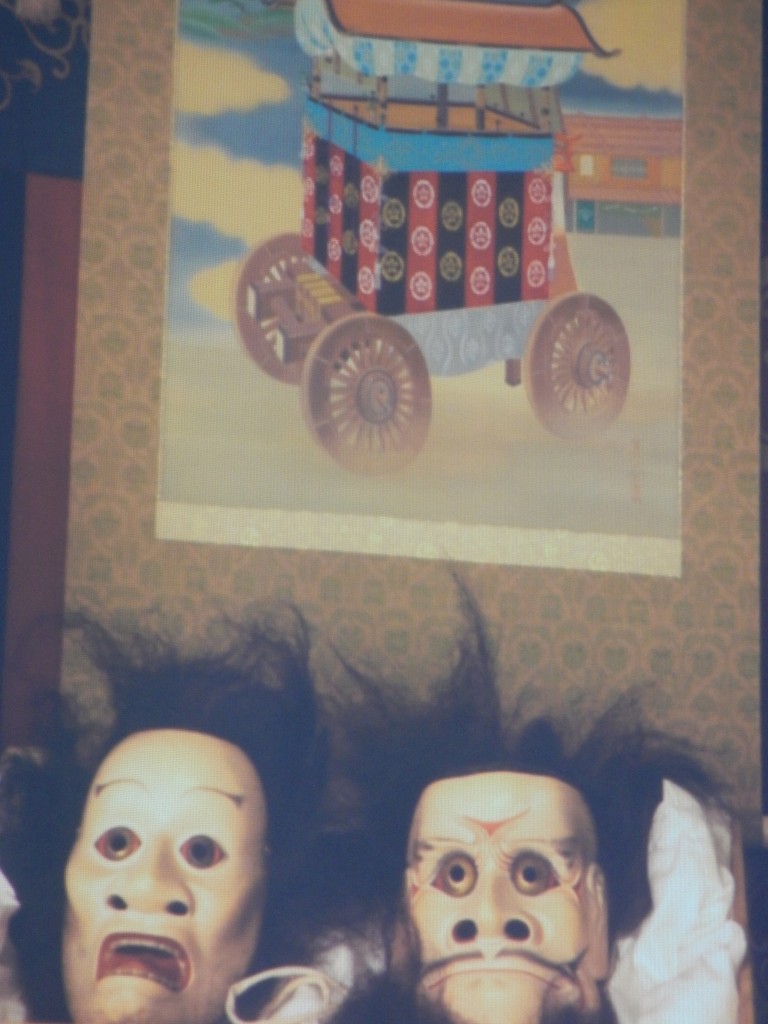
Masks now displayed as treasures would once have been worn by actors representing spirits
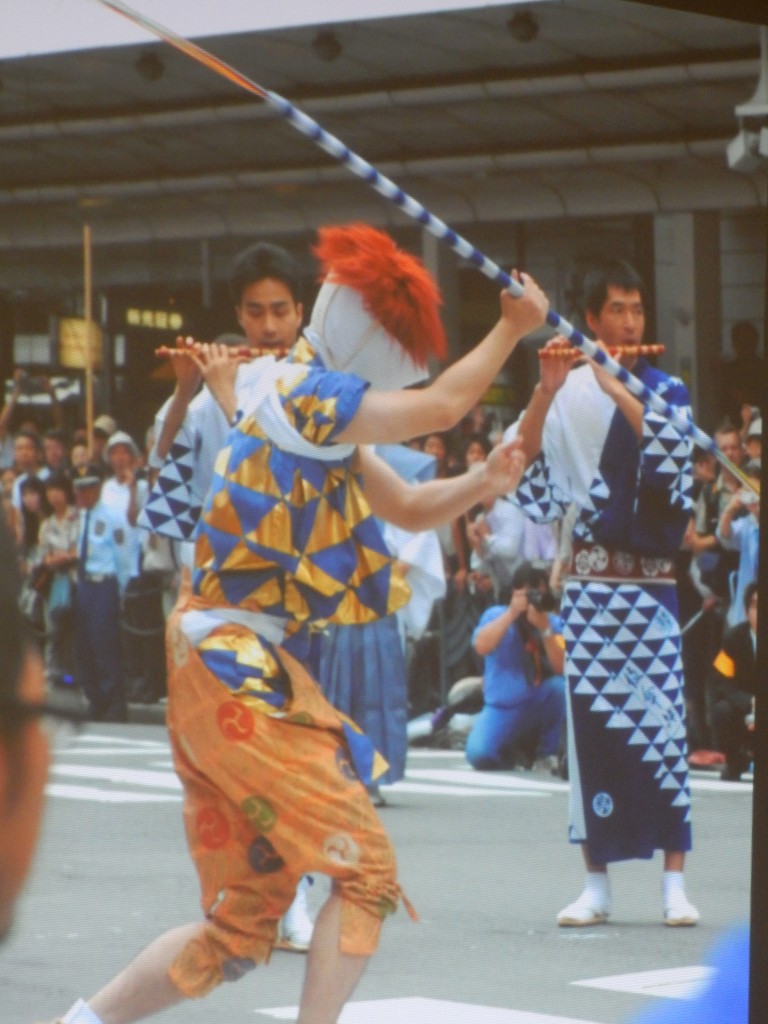
Music and dance – once part of a shamanic rite?

Leave a Reply